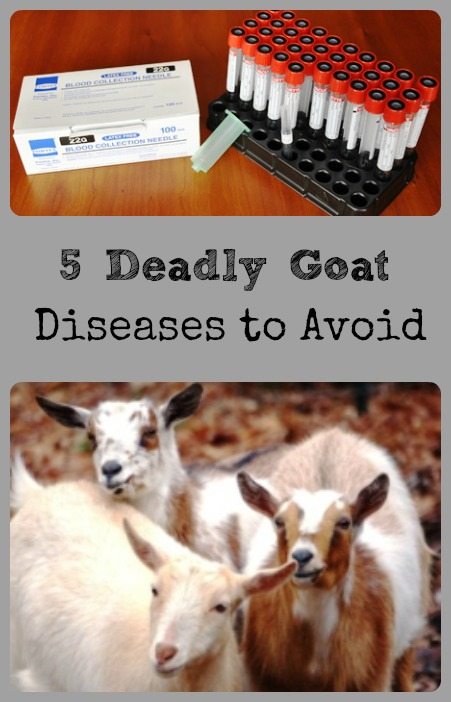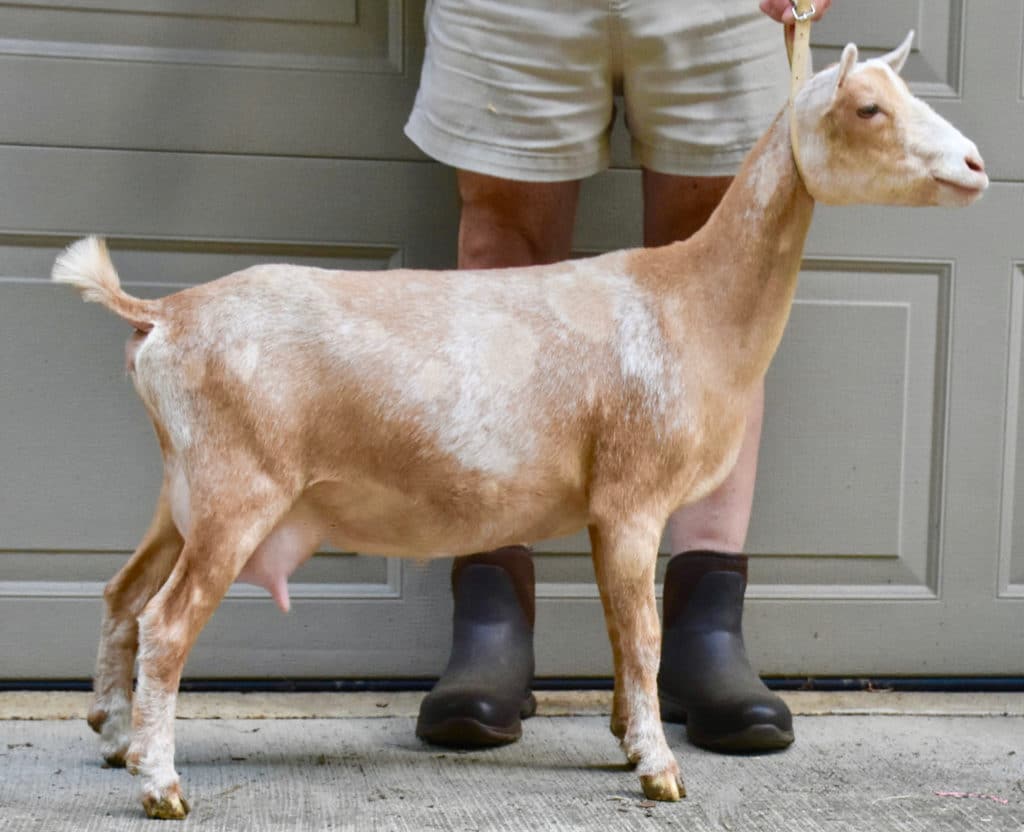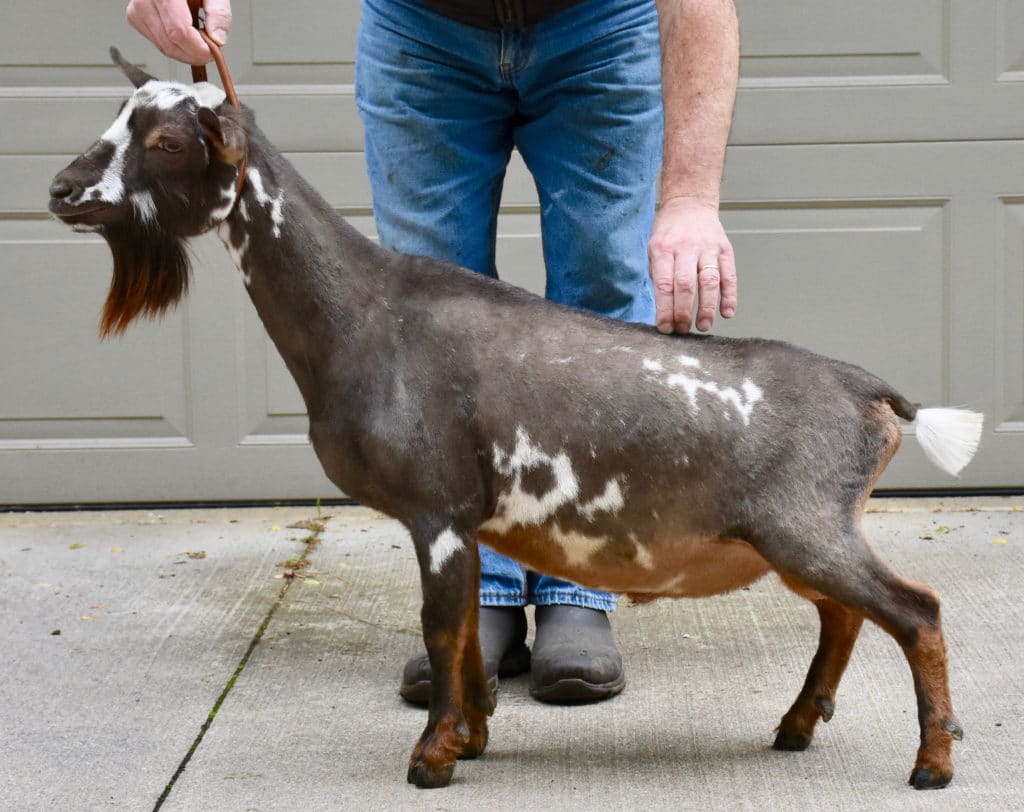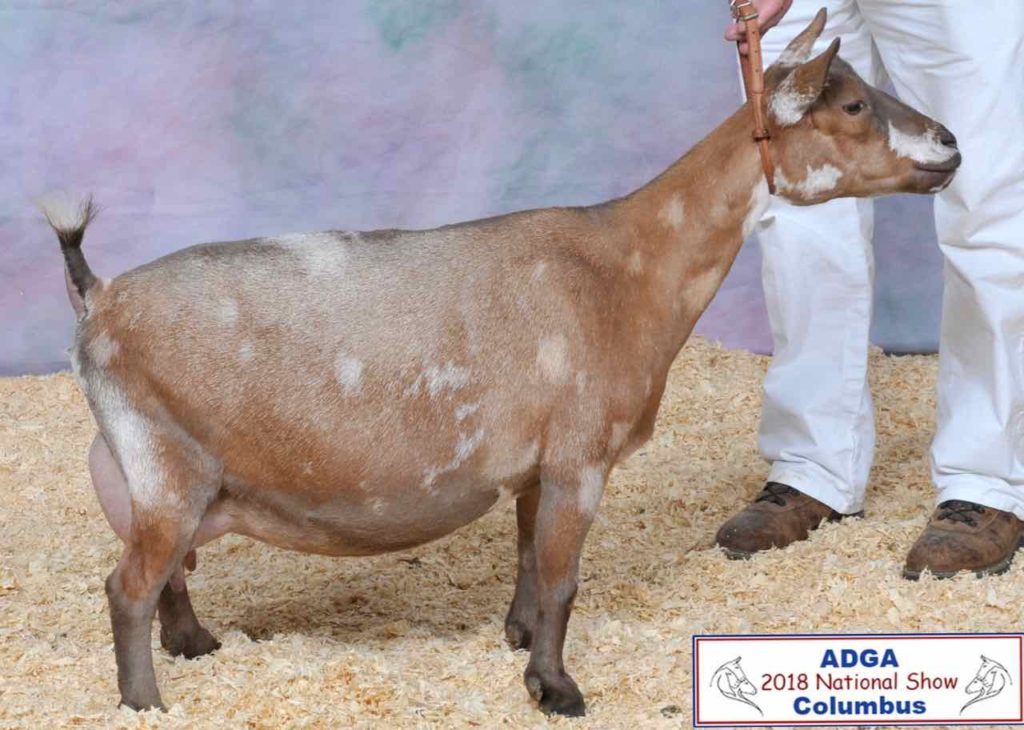
The five fatal goat diseases are described below. There is no known cure for any of these diseases and bringing home just one infected goat can spread the disease through the entire herd. Therefore, it’s extremely important to purchase disease-free goats and practice biosecurity to protect your herd. Below are some measures you can take to support biosecurity on your farm. For additional help on selecting your first goats, see Choosing Your First Nigerian Dwarf Goats.
Testing all new goats and the herd each year can be expensive; however, it’s important to know that the goats are disease-free, the kids will be, and the milk is safe. Reputable breeders should provide this information or be willing to test any goats that you are interested in.

First Freshener Bramblestone Peach Tea
Before bringing any goat to your farm, insist that the breeder provides evidence of a disease-free herd and that each adult goat has been recently tested to ensure that they are negative for these fatal diseases. Young goats usually test negative for any disease anyway (too young to test positive), so ensure that the dam and sire have been tested and are negative before bringing the kid(s) home. A good breeder (and goat owners) will annually test their entire herd to ensure they are disease-free. They may test more often too if they have reason to believe their animals may be ill.
The 5 Fatal Goat Diseases:
CAE (Caprene Athritis Encetphalitis)
CAE is a lentivirus, from the same family as the human HIV virus, and there are forms of the disease that affect both goats and sheep (together they are referred to as small ruminant lentiviruses [SRLV]). It’s estimated that at least 25% of the goats in the United States are infected with this disease, and if it becomes active the goat will exhibit any or all of five illnesses (arthritis, encephalitis, pneumonia, mastitis, and weight loss) until death. Some goats that contract the disease never show signs of illness but are carriers of the disease for life.
CAE is carried in the white blood cells, so it’s transmitted by bodily fluids. It’s spread through colostrum and milk, contact between positive and negative goats, and clippers. Contact with sheep can also be a source of the disease. Most goats contract the disease when they are quite young and develop the disease months or years later after having exposed and possibly infecting other goats in the herd. In young goats, testing for the disease is not generally reliable until four to six months of age. Blood testing is the most common method used for detecting CAE and a true positive means the goat is infected with CAE. No cure has been developed for CAE.

Bramblestone Keenan Quinn
CL (Caseous Lymphadenitis)
This chronic disease also has no known cure and it causes internal and external abscesses to form in the lymph nodes. It causes coughing, mastitis, respiratory, and neurological problems. The disease is highly contagious and enters the goat through wounds or mucous membranes. It can take two to six months for an abscess to appear and the disease is spread when the abscess bursts and another goat contacts the bacteria. Once CL gets into the soil, it’s extremely difficult to eradicate because it can survive for long periods of time and spread via fencing, forage, clippers, straw, and hay.
Because CL is so contagious, a positive goat can spread the disease from internal abscesses even though there are no externally open abscesses. It can also pass to humans although this is rare. It’s normally recommended that any CL positive animal be culled. A blood test is used to detect CL.
Johne’ s
Johne’s is another fatal disease that affects the intestinal tract (it’s pronounced “yo-nees”). It has a long incubation period and can be hard to detect – the only symptom may be weight loss while the goat is still eating well. The disease is spread through bodily fluids and can be transmitted from cattle. Many dairy cow herds are known to be infected.
Goat kids can get Johne’s from drinking cow colostrum or milk and even pasteurizing it does not guarantee that it won’t be transmitted through the milk. Johne’s can be detected by a blood test but there’s no known treatment for the disease. The organism that causes Johne’s disease is not currently known to cause disease in humans but it has been detected in humans with Crohn’s disease.
Brucellosis
Brucellosis is now rarely seen in the United States; however, it is still fairly common in goats from Mexico. It causes spontaneous abortions (aka miscarriage), retained placentas, weak kids, mastitis, and decreased milk production in goats. It’s spread through bodily fluids and can also spread to humans through raw milk, unpasteurized dairy products, goat meat, and goat contact. In humans, the disease is called Malta Fever. It causes fever, sweating, chills, headaches, joint pain, weakness, weight loss, nausea, and depression in humans.
Tuberculosis
Tuberculosis is also rarely seen today in goats in the United States (goats are said to be highly resistant). However, because this disease can also be transmitted to humans through raw milk consumption, it’s important to verify that the herd is negative particularly if the goat milk is being consumed raw.

Bramblestone Chai Tea
Certified Disease-Free States
Since brucellosis and tuberculosis are seldom seen in the United States anymore, there are quite a few states that are “certified free” for those diseases by the federal government. If buying a goat from a state that’s certified free for that disease, our farm no longer requires testing for the disease; however, any goats coming from a state that’s not certified disease-free are tested.
Although a goat may be coming from a state that is certified free by the federal government, some states still require that goats test negatively for these diseases before being transported across state lines. If you are planning to transport in a goat from out of state, be sure to find out what your state’s requirements are. The links to the Federal Register identifying which states are certified free at the time of this writing are included below. Be sure to verify that the information below is current when checking on brucellosis and tuberculosis testing.
Validated brucellosis-free States:
Alabama, Alaska, Arizona, Arkansas, California, Colorado, Connecticut, Delaware, Florida, Georgia, Hawaii, Idaho, Illinois, Indiana, Iowa, Kansas, Kentucky, Louisiana, Maine, Maryland, Massachusetts, Michigan, Minnesota, Mississippi, Missouri, Montana, Nebraska, Nevada, New Hampshire, New Jersey, New Mexico, New York, North Carolina, North Dakota, Ohio, Oklahoma, Oregon, Pennsylvania, Puerto Rico, Rhode Island, South Carolina, South Dakota, Tennessee, Texas, Utah, Vermont, Virgin Islands, Virginia, Washington, West Virginia, Wisconsin, Wyoming.
Tuberculosis Accredited-free States or zones:
(a) The following are accredited-free States: Alabama, Alaska, Arizona, Arkansas, California, Colorado, Connecticut, Delaware, Florida, Georgia, Hawaii, Idaho, Illinois, Indiana, Iowa, Kansas, Kentucky, Louisiana, Maine, Maryland, Massachusetts, Minnesota, Mississippi, Missouri, Montana, Nebraska, Nevada, New Hampshire, New Jersey, New Mexico, New York, North Carolina, North Dakota, Ohio, Oklahoma, Oregon, Pennsylvania, Puerto Rico, Rhode Island, South Carolina, South Dakota, Tennessee, Texas, Utah, Vermont, Virginia, the Virgin Islands of the United States, Washington, West Virginia, Wisconsin, and Wyoming.

Leave a Reply